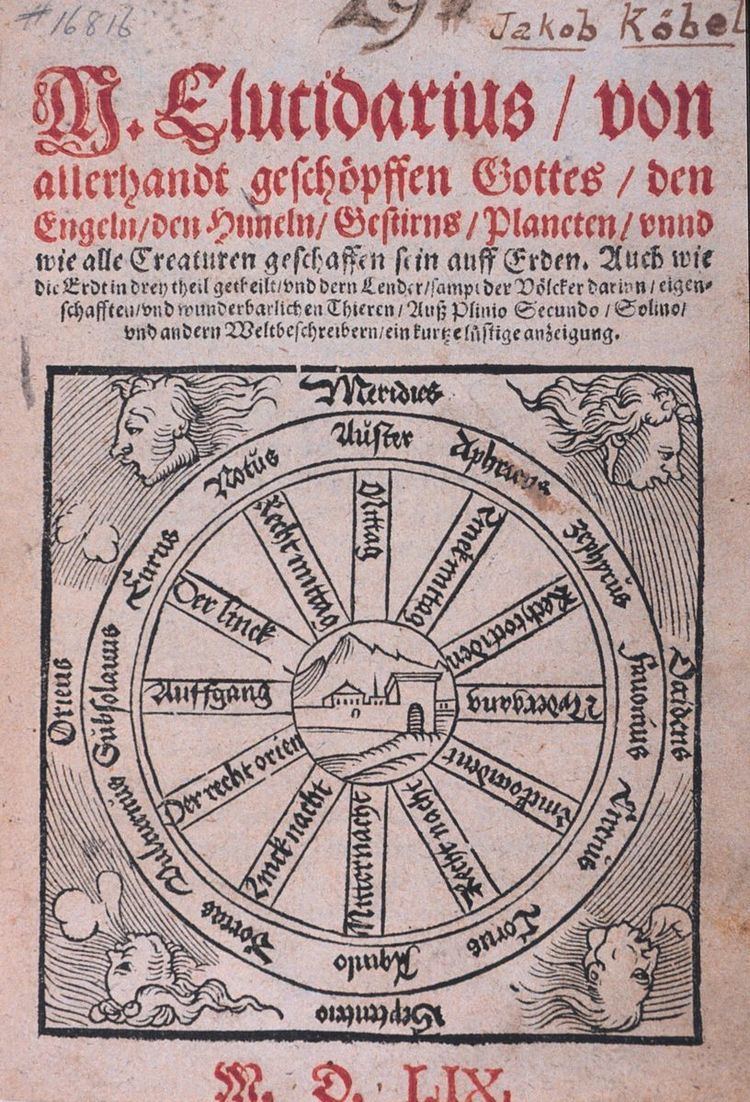 | ||
Similar Cur Deus Homo, Hortus deliciarum, The Enchiridion - Manual, Codex Regius, De divisione naturae | ||
Elucidarium (also Elucidarius, so called because it "elucidates the obscurity of various things") is an encyclopedic work or summa about medieval Christian theology and folk belief, originally written in the late 11th century by Honorius Augustodunensis, influenced by Anselm of Canterbury and John Scotus. It was probably complete by 1098, as the latest work by Anselm that finds mention is Cur deus homo. This suggest that it is the earliest work by Honorius, written when he was a young man. It was intended as a handbook for the lower and less educated clergy. Valerie Flint (1975) associates its compilation with the 11th-century Reform of English monasticism.
Contents
Overview
The work is set in the form of a Socratic dialogue between a disciple and his teacher, divided in three books. The first discusses God, the creation of angels and their fall, the creation of man and his fall and need for redemption, and the earthly life of Christ. The second book discusses the divine nature of Christ and the foundation of the Church at Pentecost, understood as the mystical body of Christ manifested in the Eucharist dispensed by the Church. The third book discusses Christian eschatology. Honorius embraces this last topic with enthusiasm, with the Antichrist, the Second Coming, the Last Judgement, Purgatory, the pains of Hell and the joys of Heaven described in vivid detail.
The work was very popular from the time of his composition and remained so until the end of the medieval period. The work survives in more than 300 manuscripts of the Latin text (Flint 1995, p. 162). The theological topic is embellished with many loans from the native folklore of England, and was embellished further in later editions and vernacular translations. Written in the 1090s in England, it was translated into Anglo-Saxon within a few years of its completion (Southern 1991, p. 37). It was frequently translated into vernaculars and survives in numerous disparate versions, from the 16th century also in print in the form of popular chapbooks. Later versions attributed the work to a "Master Elucidarius". A Provençal translation revises the text for compatibility with Catharism. An important early translation is that into Old Icelandic, dated to the late 12th century. The Old Icelandic translation survives in fragments in a manuscript dated to ca. 1200 (AM 647a), one of the very earliest surviving Icelandic manuscripts. This Old Icelandic Elucidarius was an important influence on medieval Icelandic literature and culture, including the Snorra Edda.
The editio princeps of the Latin text is that of the Patrologia Latina, vol. 172 (Paris 1895).
